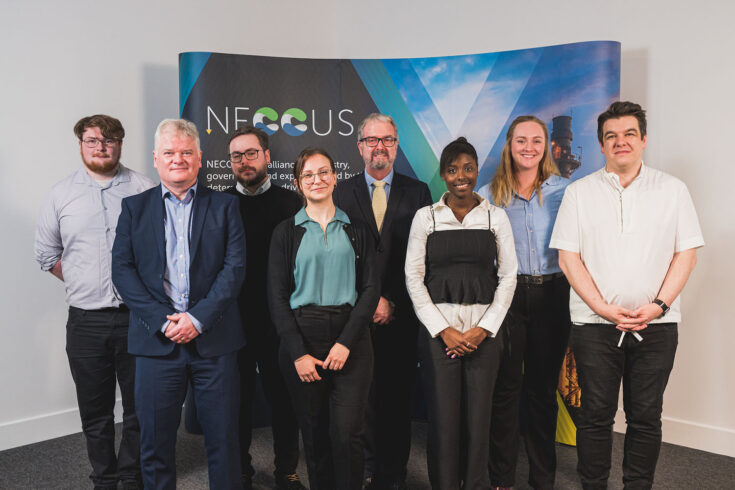About the project
When it comes to decarbonising industry, there are some important differences between Scotland and the rest of the UK. The Scottish government, as well as Westminster, gives focus and direction to efforts around decarbonisation.
While, for example, the UK as a whole is committed to reducing its net greenhouse gas emissions to zero by 2050, the Scottish Parliament has legislated to reach the same target five years earlier.
Scotland is also unique in having established a Just Transition Commission, an independent body reporting into government that aims to ensure that no-one is economically disadvantaged by the move to decarbonise all aspects of our lives.
Geographically too, Scotland’s case is different from much of the rest of the UK. Scottish waters in the North Sea have vast capacity for carbon dioxide (CO2) storage: much more CO2 could be locked away beneath the seabed than Scottish industry currently emits. This can open up storage solutions for the rest of the UK and beyond, which represents a significant economic opportunity.
All of this is being taken into account in the Scottish Net Zero Roadmap (SNZR) project, which is developing detailed plans for decarbonising Scotland’s industry, with support from UK Research and Innovation’s (UKRI) Industrial Decarbonisation Challenge and delivered by Innovate UK.
Video credit: UKRI
On-screen captions and an autogenerated transcript are available on YouTube.
Impacts of the project
The cluster spreads along a corridor from East Lothian in the south of Scotland to St Fergus in the north-east, as well as Scotland’s densely populated Central Belt. Industries within the cluster currently emit some 8.6 million tonnes of carbon dioxide (see the ‘analysis Scottish industrial emissions baseline’ report) each year, or 76% of Scotland’s industrial CO2 emissions.
Mark Hughes is Operations Manager at NECCUS, an alliance of over 50 Scottish business, government and research organisations, which is playing a lead role in the SNZR project. As he explained, the approach of SNZR is very much bottom-up:
We’re focused on the 28 largest carbon emitters in the cluster, as well as major infrastructure providers and local authorities. We’re starting with them, working to understand their patterns of energy use and emissions, and developing company-specific solutions that can then be built up into industry-wide solutions.
In Scotland, developing a detailed roadmap for getting to net zero involves taking account of a number of existing decarbonisation projects. For example, the Acorn Carbon Capture and Storage project, led by Storegga Technologies and involving Shell UK Limited, Harbour Energy and North Sea Midstream Partners. The project is working to repurpose existing North Sea gas pipelines to take CO2 from industrial sites for permanent storage beneath the seabed.
So far, the SNZR project has focused on understanding the current status of carbon-emitting businesses in Scotland. The next stage is to begin modelling scenarios to achieve net zero, showing the different technical options available, the infrastructure that would be needed and the policy levers that can be pulled to support industrial decarbonisation.
But this focused analysis can only go so far. As Iain Weir, Managing Director of research and strategy consultancy Optimat Ltd, explained:
Through the SNZR project we’ll identify what changes we think businesses should make to reduce their net emissions to zero. We hope they will take on board our analysis and take the necessary action to make net zero a reality.
Top image: Credit: Chris Logue, NECCUS

